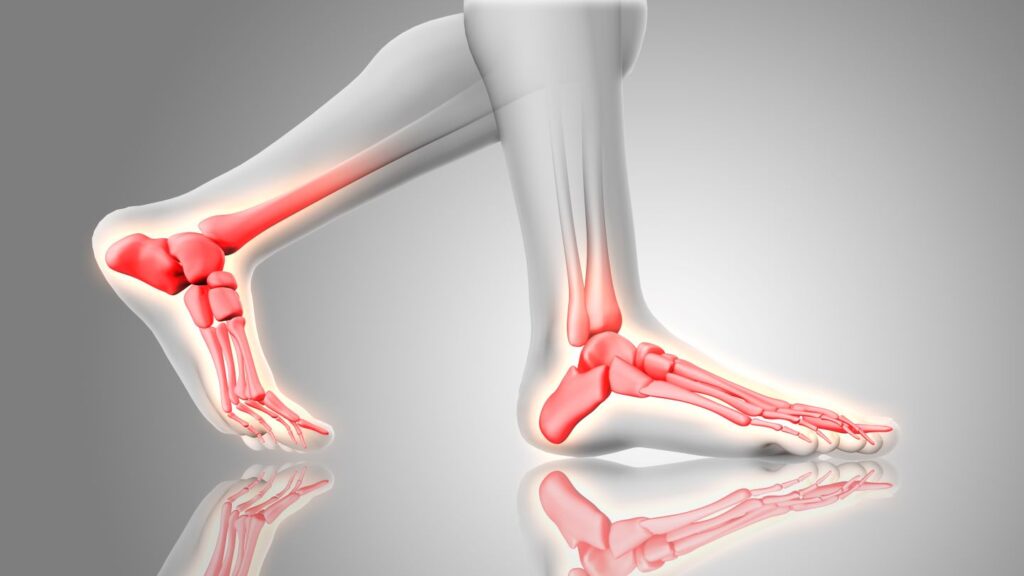Names for Parts of the Foot with Their Features

Names for Parts of the Foot
The human foot is a complex structure with multiple parts that work together to support body weight, provide stability, and enable movement. Here are all the parts of the foot given below.
- Toes (Phalanges)
- Metatarsal Bones
- Midfoot
- Arch of the Foot
- Heel (Calcaneus)
- Ankle (Talus)
- Arch Tendons and Ligaments
- Sole (Plantar Surface)
The foot comprises intricate parts, these foot parts including toes with phalanges, metatarsal bones, a midfoot with tarsal bones forming arches, the plantar surface supporting the arch, a sturdy calcaneus in the heel, ankle bones facilitating movement, the Achilles tendon for propulsion, and the essential plantar fascia, collectively contributing to the foot’s remarkable structure and functionality.
Features of the Parts of the Foot
The features of the diverse feet parts collectively contribute to a finely tuned biomechanical system, offering a remarkable combination of strength, flexibility, and adaptability for various functions, from weight-bearing to dynamic movement. Here are the main features of the parts of the foot:
Toes (Phalanges)
- Each toe consists of three phalanges, except for the big toe (hallux), which has two.
- The phalanges are proximal, middle, and distal, starting from the foot and moving towards the tip of the toe.
Metatarsal Bones
- The metatarsals are long bones that connect the toes to the midfoot.
- They are numbered from one to five, with the first metatarsal connecting to the big toe.
- The metatarsal heads form the ball of the foot and play a crucial role in weight distribution during walking and running.
Midfoot
- The midfoot comprises several tarsal bones, including the navicular, cuboid, and three cuneiform bones (medial, intermediate, and lateral).
- These bones work together to form the foot arches, namely the longitudinal arch (running lengthwise along the foot) and the transverse arch (running across the foot).
Arch of the Foot
- Muscles, tendons, and ligaments support the arches of the foot.
- The longitudinal arch is divided into a medial (inner side) and a lateral arch (outer side).
- The arches provide flexibility, absorb shock, and assist in adapting to uneven surfaces.
Heel (Calcaneus)
- The calcaneus is the most prominent tarsal bone, forming the posterior part of the foot.
- It connects to the Achilles tendon, which attaches to the calf muscles, allowing ankle movement and plantarflexion.
Ankle (Talus)
- The talus is a tarsal bone that articulates with the tibia and fibula to form the ankle joint.
- It allows for dorsiflexion movements (raising the foot) and plantarflexion (pointing the foot downward).
Arch Tendons and Ligaments
- The plantar fascia is a thick band of tissue that runs along the sole, supporting the arch.
- The spring ligament connects the calcaneus to the navicular bone and helps maintain the arch structure.
Sole (Plantar Surface)
- The plantar surface of the foot is covered by a thick layer of connective tissue, known as the plantar aponeurosis, which is continuous with the plantar fascia.
- The plantar surface contains fat pads that act as natural shock absorbers and provide cushioning.
Understanding the intricate details of the parts of foot and foot’s anatomy is crucial for healthcare professionals, including podiatrists and orthopedic specialists, when diagnosing and treating foot conditions and injuries. Proper care and attention to foot health and wellness contribute to overall well-being and mobility.







